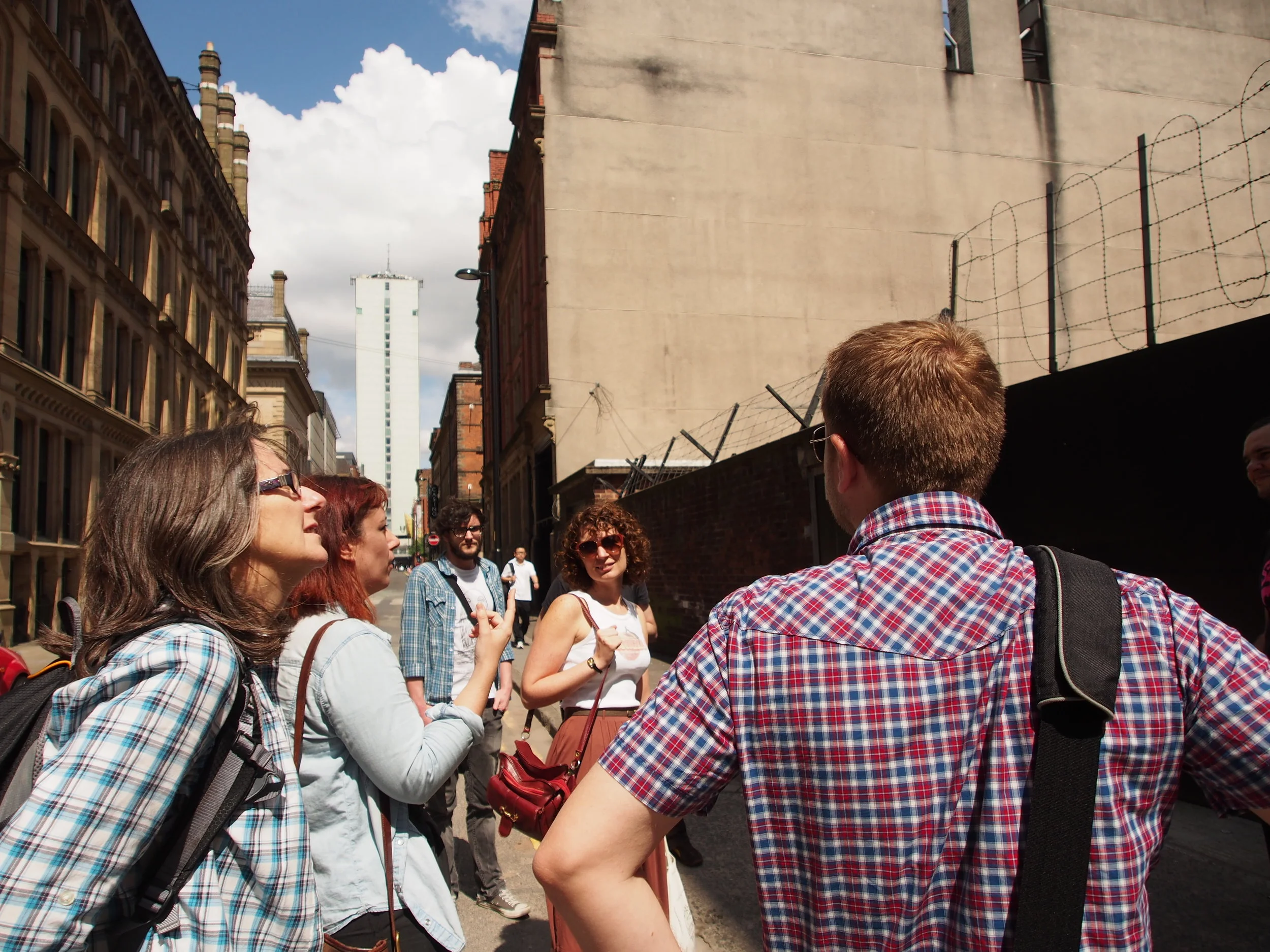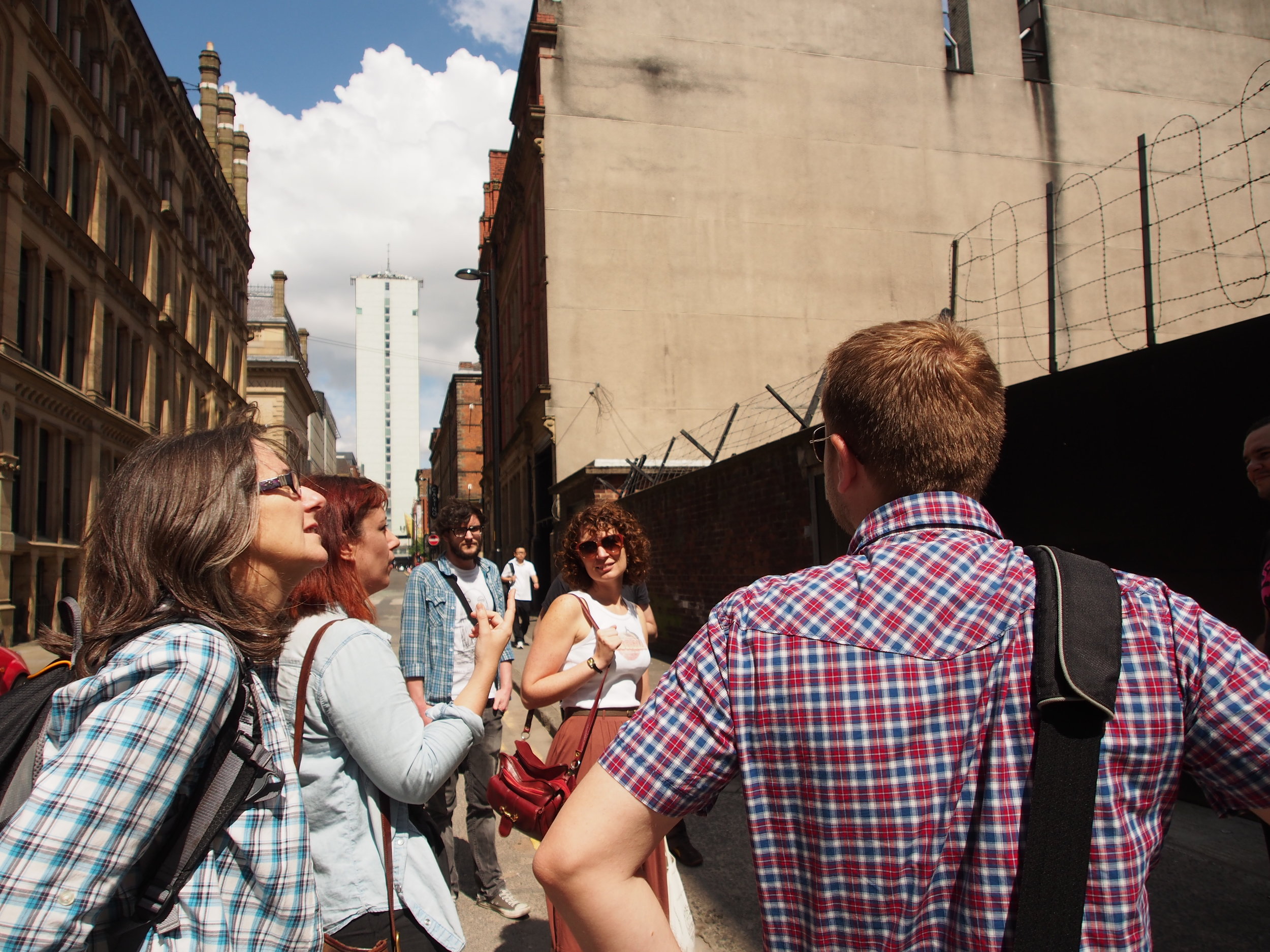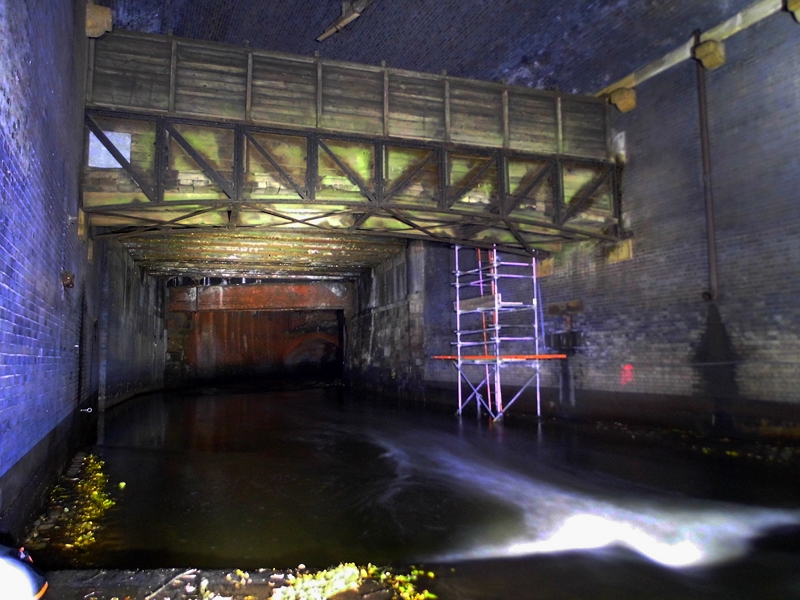THE GUARDIAN EXCHANGE
WRITTEN BY Hayley Flynn
READING TIME: 10 minutes
Is the secrecy surrounding the Guardian bunker worth all the fuss?
The Guardian Exchange is a series of cold war communications tunnels beneath the city and they are most definitely not the stuff of legend. They are very real - as that giant razor wire-defended bunker on Back George Street will attest to. What is mythical about this location, in my opinion, is the notion that there's something the government still aren't telling us; that there's another purpose even now for the network of telephone cables; that there's some duplicity at work; and a reason why it continues to be heavily safeguarded.
It's exactly this idea of secrecy that makes the Exchange special. It was at one time top secret (well, as top secret as a large scale construction in a city centre can be), now it's just phone wires. Will the public be as effusive in thirty years time about seeing where the internet cables ran? (Well, actually...probably)
Part of a network including the Anchor in Birmingham and Kingsway in London, the exchange was to protect our communications network in the event of attack from Russia.
By the time of its completion we had seen the atomic bomb usurped by the hydrogen bomb and it was unlikely that the Exchange would be able to cope with the devastation of nuclear attack. Why then the secrecy if it was defunct?
For a start the government had invested millions in the Exchange during a time of post-war austerity and its inadequacies were not something they were about to go shouting about.
Outside the main entrance to the exchange on a Skyliner tour
These cold war contingency plans are undeniably a thing of significance and intrigue and having the legacy of this threat of war still sitting there below the surface of the city on such a large scale is a critical component of our recent history. The construction of the tunnels was an immense feat to undertake, and the images of the tunnelling itself are quite fascinating. Yet, despite the perceived mystery there are plenty of photos from inside the exchange, and a video on Youtube of people who did manage to explore it during the 90s, so it's not quite the fortress of secrets it's made out to be.
Who knows the exact myriad of reasons that prevent us from accessing the place but I'd hazard a guess that it's a long, dull list. These days BT are surely safeguarding their property from trespassers; from health and safety issues that would arise from access; from the logistics of allowing people on a working site; from the expense of making areas safe to the public after the fire of 2004; from the bother of having to rehouse half a century's worth of junk they may have stored down there. I might be wrong, it might be the lair of a Bond Villain. The hideout of a war criminal. Maybe I'm even writing this, desperately trying to convince you to leave it be, whilst duct-taped to a typewriter in one of the tunnels - a brutish armed guard prodding me menacingly with his gun.
But I digress, the tunnels have been written about profusely in recent years and I'm not here to tell you what you can already read on Wikipedia, plus I'm starting to feel like a bit of a party pooper - so how about a real story of espionage?
(Image and caption from Flashbak) From 150 ft below Manchester’s city centre, Mr John Stonehouse, the Postmaster General, makes a call from the deep level telephone exchange. The exchange was designed “to protect against total interruption of the telephone trunk service in severe emergency”. * Mr Stonehouse took the opportunity to visit the deep-level exchange while in Manchester to open the new Rutherford trunk exchange which is situated above ground.
Date: 07/10/1968
Espionage
As ever when researching a building there's often a more interesting person connected to it and during a recent talk hosted by Manchester Modernist Society about the Exchange I learned the name Stonehouse and therein lies the story.
For fourteen years the tunnels were kept close-guarded, a true government secret, but in 1968 they were revealed to the public officially during a GPO publicity shoot. They announced to the city, here we have it, our cards are on the table - we present to you our secret. A man holding a phone to his ear, posing for the camera, smiles and stares into the void. This man was John Stonehouse. The last Postmaster General for the UK.
This was the year that Stonehouse oversaw the introduction of first and second class stamps. A year after this photo was taken the position of Postmaster General was abolished making him the last ever Postmaster General, and Stonehouse instead became minister of Posts and Telecommunications. An ambitious man, often in the public eye, all was seemingly going well for him until 1974 when he was reported missing.
On 21 November 1974 he had left his clothes on a pile on a beach in Miami and never returned, he was reported missing and it was feared he'd drowned but newspaper reports from the time state that it was thought that he didn't enter the water. It's unclear how they came to think this. Labour MP and close friend of Stonehouse, William Molloy announced that same day that he wouldn't rule out mafia involvement in the disappearance:
"John Stonehouse was a man of such ingenuity that if he had not been destroyed he would have found some way or other of contacting the outside world. It looks as if he is dead."
Others speculated he may have committed suicide owing to some tough criticisms he'd received over how he'd handled business matters.
Even on the day of his disappearance, people were already doubting if it was as straightforward as a drowning. Perhaps eyebrows were raised because of an accusation raised four years prior to the incident on Miami Beach - a Czech intelligence officer went on record to name Stonehouse as his contact in the UK. Was Stonehouse a spy for the Eastern Bloc? When journalists raised this point once more with Stonehouse's wife after his disappearance she said:
"The next thing we know people will be saying he swam out from the Florida beach where he disappeared to a Russian submarine."
Oh, Mrs Stonehouse. You're getting warmer.
Stonehouse was indeed a spy. However, this wasn't made public until 2010 and it wasn't the explanation behind his vanishing either. Stonehouse had debt, and it was becoming apparent that there were holes in the accounts of a charity that he was heavily involved in to the tune of £600,000, along with the existence of several fraudulent businesses (his empire was as large as 23 businesses).
People came to accept, on learning of his financial troubles, that he had committed suicide but that's no way for a spy to die now is it? John Stonehouse had faked his own death.
Not long after vanishing, police in Australia were hot on the heels of a man they thought was Lord Lucan who had also disappeared a few weeks before Stonehouse following the murder of his childrens' nanny. The police had watched their British suspect making large transactions in various banks and on Christmas Eve they arrested him in his flat in Melbourne. Their Lord Lucan turned out to be John Stonehouse. He had used a series of false passports to enter the county, and when his delighted wife learned he was still alive she flew out to meet him unaware that he had started his new life with his secretary. Stonehouse served three out of seven years for theft, deception and fraud. When he was released from jail in 1979 he married his secretary Sheila Buckley. He died in 1988.
The Trouble With Public Access
The Guardian is undoubtedly an interesting part of the city's recent history and is the city's largest concrete structure - stretching from Ardwick to Chapel Street, but if it was open to the public as an attraction would people still harbour the same desire to get inside it?
There's a series of caves in Stockport, most of which are sealed up - oh I wish I could get in those, I hear you cry. Actually you can - some of them are open to the public and you can go in anytime you want. Oh, really? Nah, won't bother then. I want to see the less good ones that I'm not allowed in. Why AREN'T I allowed in them?! That's what I want to know. What are they hiding? It's a conspiracy, that's what. No, no, it's making it safe - the cost involved, there's just not the money to open them all up, and if they were opened up and the public could go in then...Oh no! Wait a minute. Not THE PUBLIC, I don't want to go in if the PUBLIC can go in. Just me. It's a conspiracy until someone can prove to me otherwise by letting me in, me alone, no one else, and I don't want to pay any money or have experts interpret its history for me.
The yearning to see what most people have not is the attraction, not the site itself. So would BT (who manage the network of cables in the Guardian Exchange) benefit from investing in making any part of the Exchange visitor friendly? If we were allowed in one part surely we would feel disenfranchised about not being allowed into another. There's always going to be a door we can't get behind, and we'll always imagine a conspiracy behind it.
Manchester’s Other Underground Locations
There's underground spaces all over the region that you can explore or at least try to; there were regular tours of the canal under Great Northern Warehouse until recently, and there's an air raid shelter in the Northern Quarter that literally no ones pays a blind bit of notice to (but if you ask nicely you can have a peek inside). If you're looking for something more on the dark side then there's the crypts beneath St Philip's church where you can gaze upon the rotting coffins of the entombed.
And what of the spaces that we can't get at? There's a space underneath Topshop in the Arndale that was left over for a train station when the underground Picc-Vic line was being planned. This underground cavern has been subject to the same romanticism by curious Mancunian minds as the Guardian Exchange and it's not uncommon to hear people describe a fitted-out station hidden away down there. Sadly it's just a blank space, no fixtures or fittings, its differences imperceptible from any other regular cellar space. But the reason for its existence is appeal enough.
At another point beneath the Arndale was once the shaft of a huge well. It originally emerged into the Wishing Well Restaurant when the area was still Cromford Court and a network of beat clubs and coolness. Customers of the Wishing Well had no idea that the well they could see in the restaurant was not only a decorative feature but in fact continued deep underground. Just before demolition heritage consultant Ken Howarth went inside.
The cattle chute
Cattle bridge. The wooden parts date from 1650
Cattle bridge up close. Irk images by Nickindroy
Beneath Victoria Station is the culverted River Irk, one of many lost waterways of the city, in the darkness down there there's even a 300 year old wooden cattle bridge that would have transported cattle from fields on one side of the city to Shudehill meat markets. There's a cattle chute too, now bricked up, that would have been used to drop dead cattle onto boats below - a fact which implies a certain frequency of cattle mortality during the journey that I'm at a loss to be able to explain. Up above ground, see that water feature in Cathedral Gardens by Chetham's? That's a symbolic nod to the River Irk lying below us. It's actual route can be traced by the cobble street that sweeps around the backside of the magnificent Chetham's music school extension. The private bridge that crosses over it, part of the school, has the word Irk carved into it.
Now then, I know much of the draw of urban exploring is to see places without permission but we can't all be Urbexers. And I know, sat here in my ivory tower having accessed many of the city's secret spaces how much of a hypocrite that makes me seem. But I'm here to tell you - some of them are good, some of them are dull as dishwater. And most of the good ones have public access during open days, or some of them are sat in wait of discovery any time if you ask nicely and know where to look...and if you don't, get in touch.
There’s lots of great content about underground Manchester over on Hidden Manchester.







